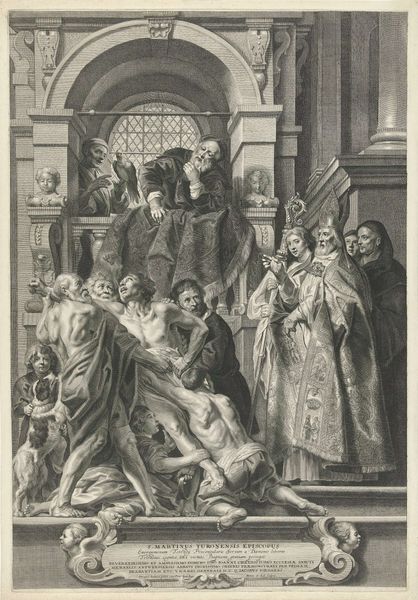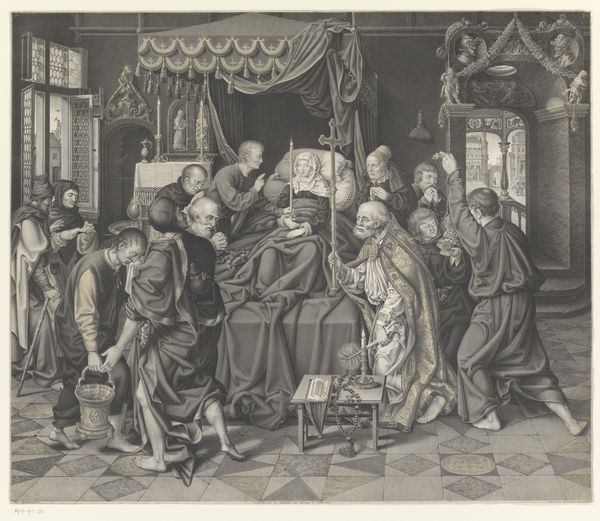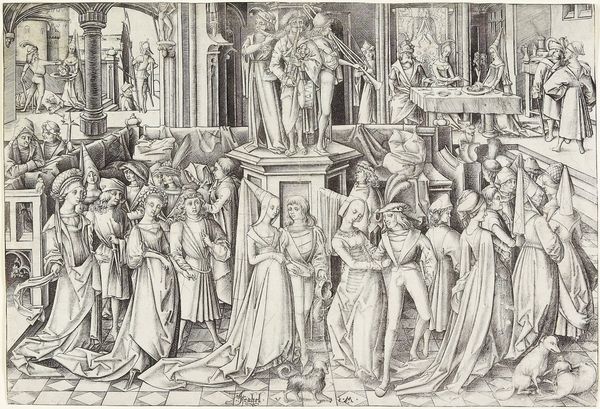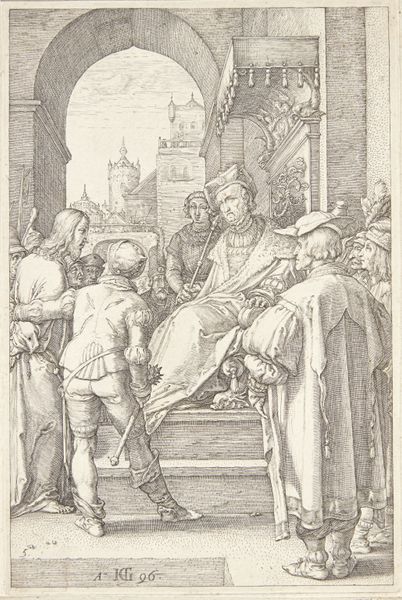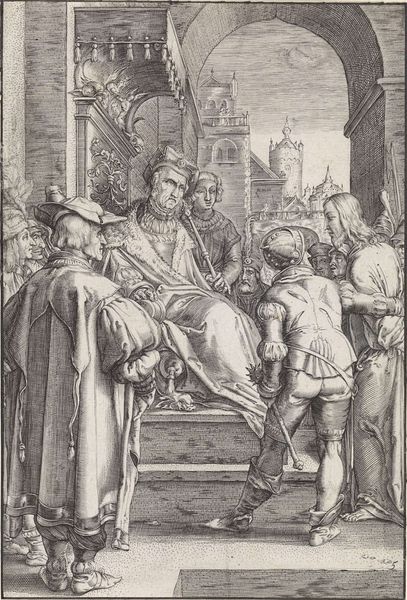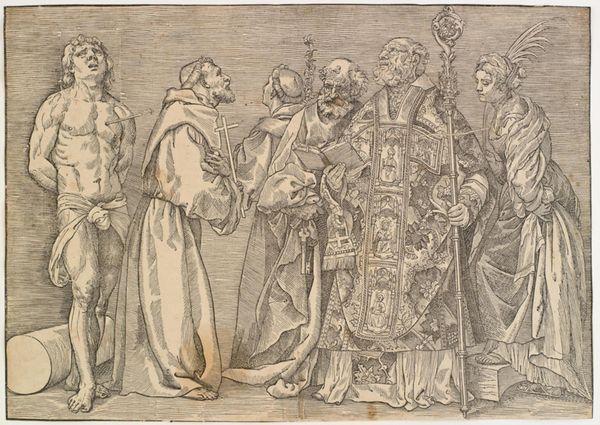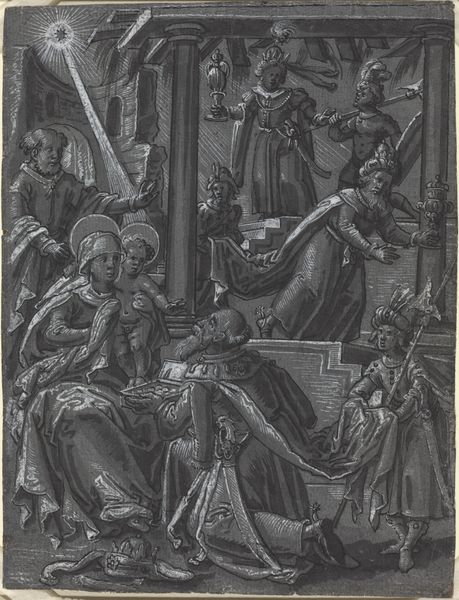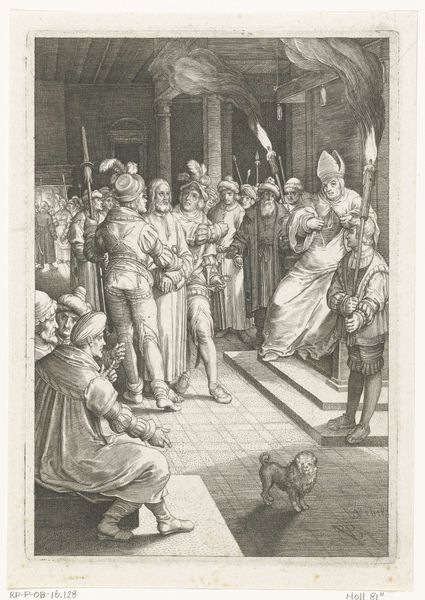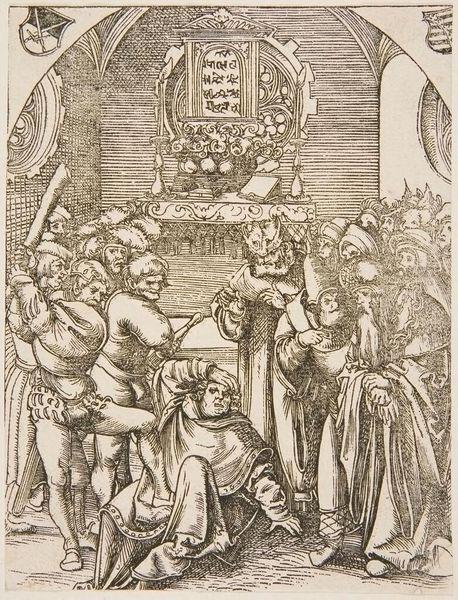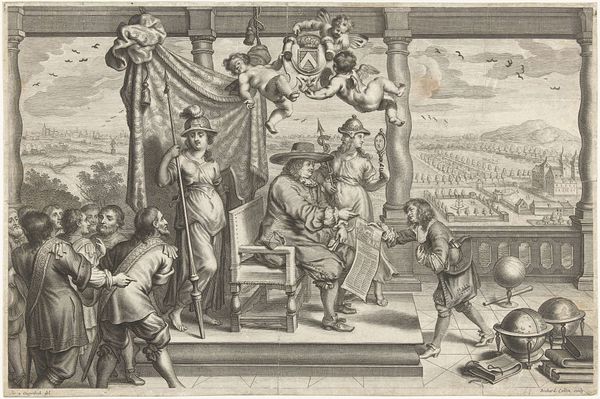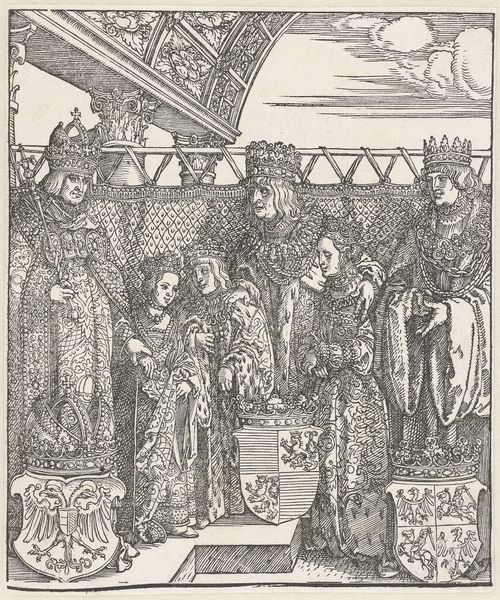
painting, oil-paint
#
narrative-art
#
painting
#
oil-paint
#
figuration
#
oil painting
#
history-painting
#
northern-renaissance
Copyright: Public domain
Curator: We’re looking at a Northern Renaissance oil painting entitled “Jesus in front of Pontius Pilate” by Jan Joest. Though undated, it evokes a specific cultural moment through its rendering of this important biblical scene. Editor: Immediately striking is the formal juxtaposition between the chaotic figures to the right—the distress, the armor—and the impassive observation occurring on the left, anchored by Pilate’s regal bearing. It's as if Joest is asking us to look at the event through distinct registers. Curator: Precisely. The artist emphasizes power dynamics here. Note Pilate, adorned in fur, his ritualistic washing of hands performed by an attendant— a very performative display of distancing himself from responsibility in a society where the dynamics of governance, religious authority, and societal pressure were constantly in flux. Editor: Yes, and formal composition bolsters your point. See how the rigid architecture of the background—the pillars, the tiling—imitates the structured hierarchy of the scene. It speaks to Renaissance interests in geometry and order that simultaneously underscore themes of control and judgment. The light, too, concentrates strategically. Curator: And considering that Joest was a prominent artist during a time of immense social change, it makes one ponder how he is subtly commenting on justice and political maneuvering. Even Christ's figure becomes emblematic—representing marginalized figures crushed under these machinations. The emotional resonance is heightened by this reading, shifting from a mere historical depiction to a profound statement. Editor: Although I appreciate that perspective, my eye remains fixed on how skillfully Joest employed oil paint. The textural contrast, say, between the metal of the armor and the softness of the robes, produces a tactile reality which amplifies the physical drama. In concentrating on form and method, we appreciate the artifice through which he relays even a historical narrative. Curator: Still, analyzing solely for the painterly aspects does not account for the full measure of intent within the scene. It omits, for example, what a figure such as Christ might symbolize for those marginalized at the time— it gives short shrift to broader dialogues on how images have been used to promote agency among the underrepresented. Editor: Well, through attention to composition and light, perhaps we can both agree the artist successfully encourages a longer meditation on how individual morality fares against broader political action— or inaction. Curator: Indeed. Viewing “Jesus in front of Pontius Pilate” requires an appreciation for Jan Joest’s technical finesse while simultaneously exploring the intricate social currents that ripple beneath the surface.
Comments
No comments
Be the first to comment and join the conversation on the ultimate creative platform.
